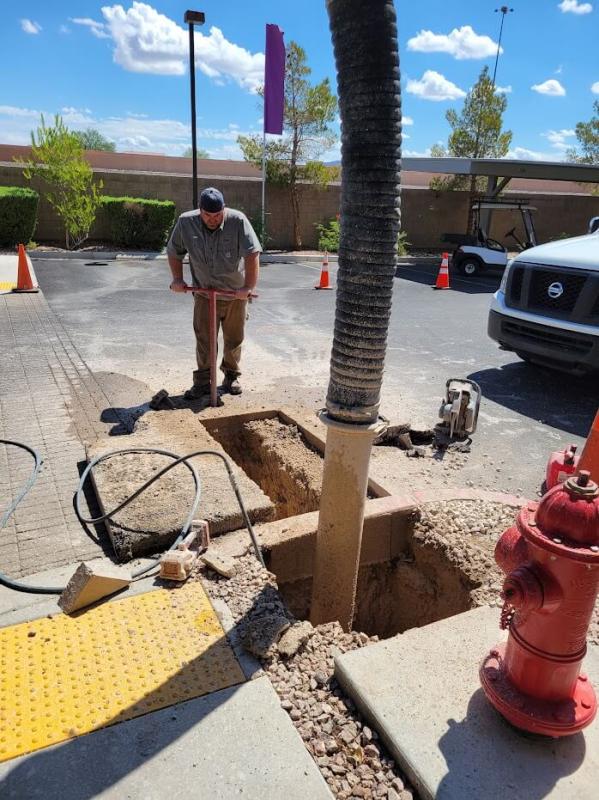How To Avoid Utility Strikes With Hydrovac Trucks
They're much safer than traditional excavation methods.
Posted 09:44 June 25, 2025
Last Updated 09:44 June 25, 2025
 Avoiding utility strikes is a critical concern in any excavation project, and hydrovac trucks offer one of the most effective solutions for minimizing this risk. Utility strikes—incidents in which buried infrastructure such as gas lines, water mains, electrical cables, or fiber optic conduits are damaged during digging—can result in costly repairs, hazardous conditions, service outages, and even serious injury or loss of life. Traditional excavation methods, such as using backhoes or other mechanical equipment, often rely on outdated or inaccurate utility maps, increasing the chance of striking a hidden line. In contrast, hydrovac excavation is a non-destructive technique that enables workers to locate and expose underground utilities with unmatched precision and control, making it one of the safest methods available for utility work.
Avoiding utility strikes is a critical concern in any excavation project, and hydrovac trucks offer one of the most effective solutions for minimizing this risk. Utility strikes—incidents in which buried infrastructure such as gas lines, water mains, electrical cables, or fiber optic conduits are damaged during digging—can result in costly repairs, hazardous conditions, service outages, and even serious injury or loss of life. Traditional excavation methods, such as using backhoes or other mechanical equipment, often rely on outdated or inaccurate utility maps, increasing the chance of striking a hidden line. In contrast, hydrovac excavation is a non-destructive technique that enables workers to locate and expose underground utilities with unmatched precision and control, making it one of the safest methods available for utility work.
The process of hydro excavation begins with a targeted application of high-pressure water to break up soil while a powerful vacuum simultaneously removes the slurry. This approach allows crews to uncover utility lines gradually and with visual confirmation at every step. Because there are no sharp blades, heavy scoops, or forceful ground penetration involved, the likelihood of damaging an underground utility is dramatically reduced. This is particularly important in urban or congested areas, where multiple utilities may be layered in close proximity, sometimes just inches apart. Hydrovac trucks allow for slow, careful excavation that can reveal these lines safely, giving technicians the opportunity to inspect and identify each one before any further digging or construction occurs.
Another critical factor in avoiding utility strikes is the practice of daylighting, which refers to the act of exposing known utilities to verify their exact location before proceeding with deeper excavation or construction activities. Hydrovac trucks are ideal for daylighting because they can quickly and efficiently clear away soil to reveal pipes and cables without disturbing or damaging them. This step is often required by law or industry best practices in order to comply with safety regulations. Even when utility locates are marked on the surface, discrepancies between maps and actual placement can exist, making visual confirmation essential. Hydrovac excavation bridges this gap by delivering direct visibility of what lies beneath, ensuring that construction crews operate with full awareness.
In addition to the physical safety benefits, using hydrovac technology also supports better project documentation and accountability. When utilities are exposed with hydro excavation, crews can record their precise depth and orientation, helping to update utility maps and inform future work in the area. This proactive approach not only reduces the risk of utility strikes on the current project but also improves outcomes for subsequent infrastructure efforts. Furthermore, because hydrovac trucks can operate in confined or hard-to-reach areas, they enable safe excavation in locations that would otherwise require risky or disruptive digging practices.
Ultimately, avoiding utility strikes is about more than just protecting infrastructure—it’s about safeguarding lives, reducing liability, and ensuring projects stay on time and on budget. Hydrovac trucks provide a modern, highly effective means of meeting those goals. By combining safe excavation with real-time visibility and minimal ground disturbance, they offer an unparalleled advantage in any environment where buried utilities are present. As a result, many municipalities, utility companies, and contractors now consider hydrovac excavation not just a preference, but a necessity for responsible and efficient underground work.
If you have an upcoming excavation project you'd like to discuss, contact the professional excavators here at Hole Hogz. We service Las Vegas, Henderson, Boulder City, and most parts of Clark County Nevada.
